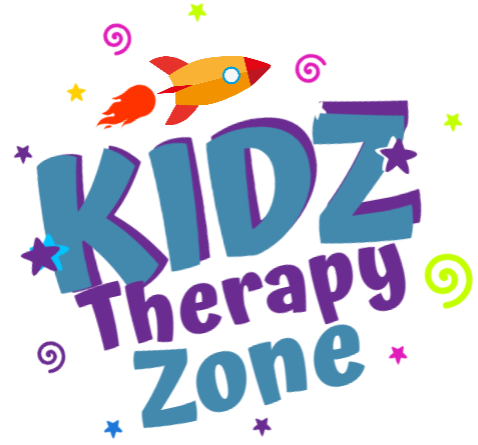Storytime is a cherished ritual that provides numerous benefits for children, especially those with special needs. It offers a gateway to imagination, learning, and bonding. This blog post will highlight some of the best children’s books that promote inclusion and diversity, suggest engaging storytime activities for children with special needs, and discuss the benefits of reading together for language and social skills.
Best Children’s Books That Promote Inclusion and Diversity
Incorporating books that celebrate inclusion and diversity into your child’s reading routine is essential for fostering empathy, understanding, and acceptance of differences. Here are some highly recommended books that do just that:
1. “Last Stop on Market Street” by Matt de la Peña
This beautifully illustrated book follows a young boy named CJ and his grandmother as they travel through the city on a bus. Through their journey, CJ learns to appreciate the beauty in everyday life and the diversity of the people around him.
2. “The Day You Begin” by Jacqueline Woodson
This inspiring book encourages children to embrace their unique qualities and find the courage to share their stories. It highlights the power of inclusivity and the importance of recognizing and celebrating differences.
3. “All Are Welcome” by Alexandra Penfold
Set in a vibrant and inclusive school, this book celebrates diversity and inclusion by showcasing children from various backgrounds and cultures coming together to learn and grow.
4. “We’re All Wonders” by R.J. Palacio
Based on the best-selling novel “Wonder,” this picture book introduces young readers to Auggie, a boy with facial differences. It teaches the importance of kindness, empathy, and seeing beyond appearances.
5. “My Papi Has a Motorcycle” by Isabel Quintero
This heartwarming story follows a young girl and her father as they ride through their vibrant community. It celebrates family, culture, and the special bond between a father and daughter.
Storytime Activities That Engage Children with Special Needs
Storytime can be an interactive and engaging experience for children with special needs. Here are some activities that can enhance their enjoyment and participation:
1. Sensory Storytelling
Incorporate sensory elements into your storytelling to make the experience more immersive and engaging for children with sensory needs.
Ideas for Sensory Storytelling:
- Tactile Props: Use objects related to the story for children to touch and explore.
- Sound Effects: Create or play sound effects that match the story’s events.
- Scents: Use scents that are related to the story to create a multisensory experience.
2. Interactive Reading
Encourage active participation by involving children in the storytelling process.
Tips for Interactive Reading:
- Ask Questions: Pause to ask questions about the story and encourage children to share their thoughts.
- Role-Playing: Act out parts of the story and invite children to join in as different characters.
- Repetition: Repeat key phrases or actions to help reinforce understanding and engagement.
3. Visual Supports
Use visual aids to support comprehension and engagement, especially for children who benefit from visual learning.
Types of Visual Supports:
- Storyboards: Create storyboards with pictures or symbols that represent key events in the story.
- Picture Cards: Use picture cards to illustrate characters, settings, and actions.
- Video Adaptations: Watch animated or video adaptations of the book to provide a visual and auditory experience.
4. Movement and Music
Incorporate movement and music to make storytime dynamic and fun.
Ideas for Movement and Music:
- Action Songs: Sing songs that relate to the story and include actions or dance moves.
- Movement Breaks: Include short movement breaks where children can act out parts of the story or dance to related music.
- Instrument Play: Use simple musical instruments to create sounds that accompany the story.
Benefits of Reading Together for Language and Social Skills
Reading together offers numerous developmental benefits, particularly for language and social skills. Here’s how shared reading can positively impact your child:
1. Language Development
Reading aloud to children helps build vocabulary, comprehension, and communication skills.
Benefits for Language Development:
- Vocabulary Expansion: Exposure to new words and phrases through stories.
- Listening Skills: Improved listening and comprehension abilities.
- Language Patterns: Understanding of sentence structure, grammar, and language patterns.
2. Social Skills
Storytime provides opportunities for social interaction and learning social norms.
Benefits for Social Skills:
- Empathy: Learning to understand and share the feelings of characters in stories.
- Turn-Taking: Practicing taking turns in conversations and interactive reading.
- Perspective-Taking: Developing the ability to see things from different points of view.
3. Bonding and Emotional Security
Shared reading strengthens the bond between parent and child, providing a sense of security and emotional connection.
Benefits for Bonding:
- Quality Time: Spending uninterrupted, focused time together.
- Emotional Connection: Building a deeper emotional connection through shared experiences.
- Positive Associations: Creating positive associations with reading and learning.
Conclusion
Storytime is a powerful tool for promoting inclusion, engaging children with special needs, and fostering language and social skills. By incorporating diverse books, interactive activities, and sensory elements, parents can create enriching and enjoyable reading experiences for their children. Reading together not only supports developmental growth but also strengthens the bond between parent and child, making it a cherished and valuable part of daily life.
References
- Children’s Books That Celebrate Diversity – PBS Parents
- Interactive Storytelling Tips – Reading Rockets
- Benefits of Reading Aloud – Scholastic
- Sensory Storytelling Ideas – The National Autistic Society
Enhancing Language Development Through Reading – Zero to Three

